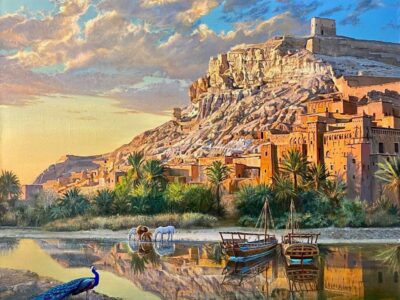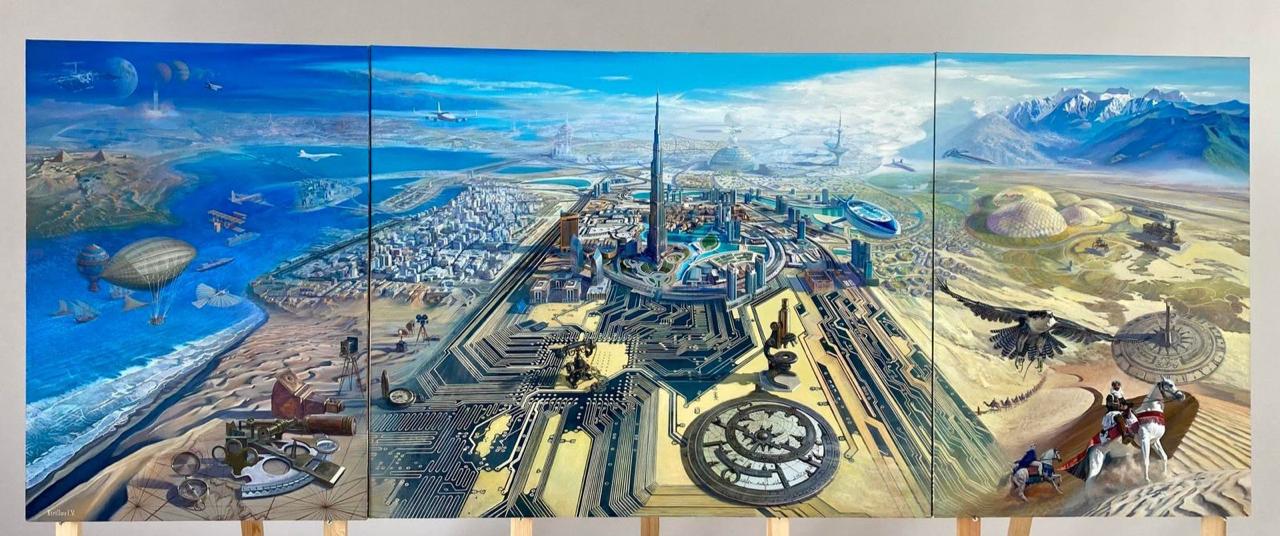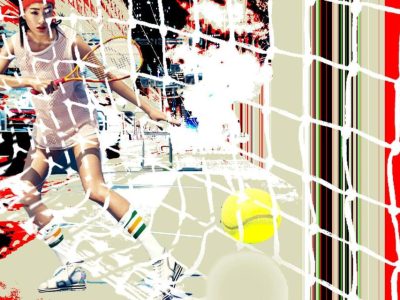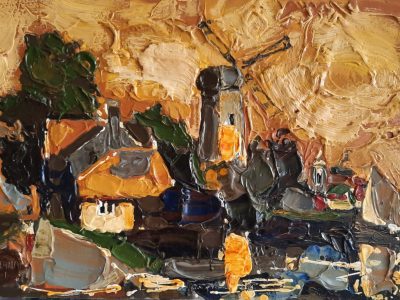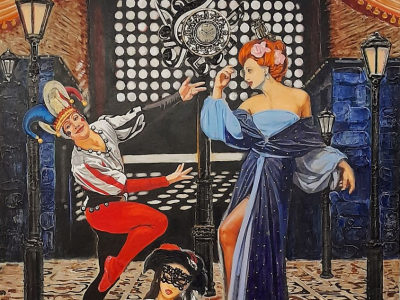The Gem of Sands (triptych)
By Igor KIRILLOV. Canvas/oils, romantic hyperrealism, symbolism. Dimensions: 100/260 (3 panels).
The Gem of Sands is an allegory giving a gentle hint of breathtaking Dubai right in the heart of the Arabian Desert — an amazing site to hold World Art Dubai 2023. At the same time, the Gem means a pearl having a unique way of shaping to become a marvelous precious stone. And Dubai is like a pearl — it is a unique city born in sandy desert sea to become a dream for millions of people willing to visit Dubai and feel a mind-blowing beauty and majesty of this city.
This triptych is not casual, it is a metaphoric image of the past, present, and future of the civilization.
When you look at the triptych you simultaneously feel smooth and rapid lapse of time which is illustrated by light — in the canvas you may see a bright morn changing dark night.
A story in the triptych virtually depicts a spiral development of human civilization when every new turn reiterates the previous one, but on a higher level, so as mankind moving up the spiral staircase thereby achieving new heights. A kind of spiral is meant by going round in circles vehicles that are typical for various stages of development of our civilization.
On the left of the triptych you may see arranged in progressive manner ships and aircrafts created by humans within our foreseeable history.
In the sea you may notice Greek and Arabic sea vehicles, La Santa Maria — the largest of the three Spanish ships used by Christopher Columbus during transatlantic expeditions to the Americas in 1492, the passenger liner of XIX-XX century which received the Blue Riband (an unofficial accolade given to the passenger liner crossing the Atlantic Ocean in regular service with the record highest average speed), and one of the biggest modern cruise liners.
In the sky over the sea you may observe a motley hot air balloon of Montgolfier brothers, one of the earliest dirigible balloons, Wright Flyer, one of the first regular passenger planes, and Concorde.
Looking at the canvas you may feel like moving through space and time — all three panels making up the triptych include the greatest inventions of the mankind whereas each of those inventions in its due time gave a stimulus for advancing of science and technological expansion.
On the left of the triptych next to a compass you may see a mariner’s sextant (ancient tool for navigation and measurement), telescope, pinhole camera (a device to receive optical images of objects), as well as antique chronometer, camera, and motion picture camera. If you look closer you may also see an antique telephone, a mobile phone, a smart phone, and a laptop.
On the proscenium of the triptych there are an antique microscope and an astrolabe (one of the ancient astronomical instruments to measure altitude above the horizon of a celestial body). Their close disposition is to emphasize the interest of mankind in micro- and macrocosm.
On the grounds of the triptych you may see a huge plated board that symbolizes worldwide technical infrastructure created in the early days which is still under persistent development. It also denotes a connection between people from all over the world, both virtual and metaphoric.
In the middle of the art you may see the famous skyscraper Burj Khalifa as a bright illustration of new technologies used in Dubai nowadays. On the right of the triptych you may also see the soaring futuristic vehicles which symbolize the progressive development of aviation.
There is an ancient shadow clock as a symbol of watching the time from its very beginning. And position of the clock is not random — the time is creeping on, but there is something eternal… there is something people keep up at all times… it is family values and traditions.
One of the main symbols of the triptych is a falconry (shown foreground on the right).
The triptych narrates of the technological advance, but it is not the only feature of the mankind. Now and always people keep up their traditions and hand them down through thousand of years from generation to generation. And this affection towards ancestor traditions helps us remain human despite of such an onrush of technology.
It’s XXI century, it’s a wonderful time. We keep in mind everything we have today, and we are grateful for everything created before us. We, the people of the present, guided by experience and wisdom of the past, will move on and create the future for the next generations.


